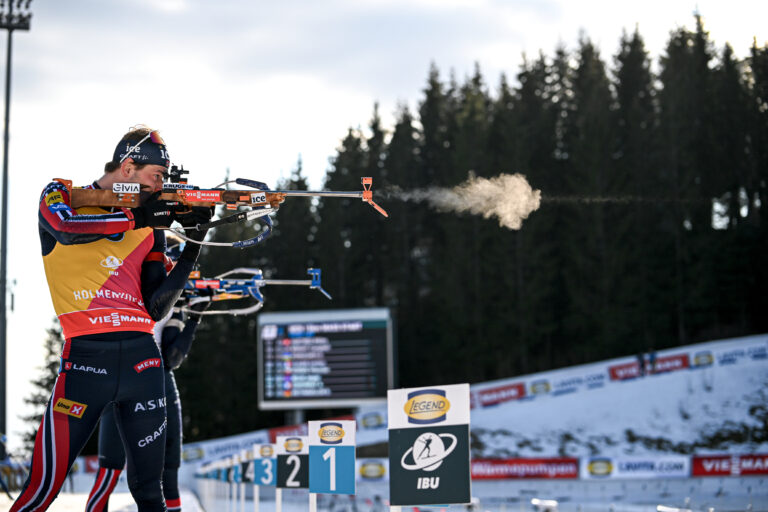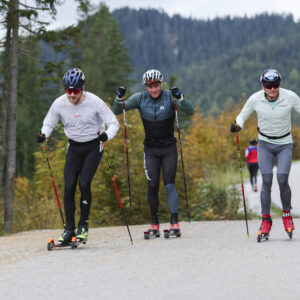Skin skis: Three essential tips you need to know
Skin skis are excellent for almost all snow conditions. With three simple steps, you can take your experience to new heights. Here’s how to maximize glide and performance with your skin skis.
Skin skis have become the undisputed champion of ski gear in recent years. Over the past 10–15 years, significant advancements have made them a top choice, and now they dominate ski sales.
And for good reason: modern skin skis, often referred to as skin skis, perform well across a broad range of temperature and snow conditions—from cold, dry snow to icy tracks, slush, and wet snow. They shine particularly well in mixed or variable snow conditions, including the notorious zero-degree conditions.
Major ski manufacturers now offer multiple models of skin skis, varying in camber and construction, suitable for everything from leisurely outings to high-performance racing.
Skin skis simplify skiing for those intimidated by traditional waxing and appeal to active skiers and ambitious recreational skiers who want to reduce prep time for everyday training.
Read more: Training plan for working cross-country skiers

Three Key Steps for Better Skin Skis
While skin skis eliminate the need for grip waxing, they aren’t entirely maintenance-free.
“Three things are essential for skin skis: impregnation, cleaning, and waxing,” says Roger Gråv, head of the cross-country department at Sport1 Lillehammer.
1. Impregnation
Treat the skins with impregnation to prevent icing, clumping, and excessive moisture absorption, while enhancing glide.
Impregnation products resemble liquid glide waxes, but dedicated solutions for skin skis have been developed in recent years. Gråv recommends these specific products.
“They aren’t drastically different from regular liquid glide waxes, but the ones designed for skin skis don’t contain solvents that could react with the adhesive securing the skins to the base. In the worst case, the skins could come loose,” he explains.
Impregnation products are available as sprays or pre-moistened wipes.
Apply impregnation as needed—when you notice reduced glide on similar conditions or anticipate wet, sticky snow. Skins can also be prepped specifically for competition use.
2. Cleaning
If debris accumulates on the trail or the conditions involve klister snow, clean the skins afterward.
“This is especially relevant during spring when klister snow and debris are common. You’ll see the buildup on the skins. For regular use, inspect the skins for dirt or signs they’ve lost their springiness. Dark-colored skins make dirt harder to spot, but you’ll notice when they appear matted or dull,” Gråv explains.
Use cleaning products made for skin skis, as regular ski cleaners often contain solvents that could damage the adhesive.
Skin ski cleaners are available as sprays or pre-moistened wipes.
3. Waxing
Like all skis, skin skis require regular waxing for optimal glide.
Using liquid glide wax is simple and takes less than 10 minutes per pair. Instructions may vary by brand, but the general process is: apply or spray glide wax on the glide zones, let it dry, polish, and you’re ready to ski.
If you prefer traditional glide wax applied with an iron, take care to avoid contaminating the skins. Otherwise, wax the glide zones as usual.
“Cover the skins during the process to avoid dripping wax or collecting debris while scraping and brushing. Sports shops sell protective tape for this purpose. Lay it over the skins, and you can scrape and brush freely. Just remove the tape when finished,” advises Gråv.
Buy the Right Skis
In recent years, manufacturers have introduced skin skis in both racing and recreational categories, available at different price points. Gråv emphasizes choosing skis tailored to your needs and expectations.
“It’s as crucial to choose skin skis suited to your intended use as it is with other types of skis. We often see customers buying inexpensive skin skis, then wondering why they don’t perform as well as their high-end racing skis. If you’re used to top-tier racing skis and opt for budget skin skis, you’ll notice the difference,” says Gråv.










